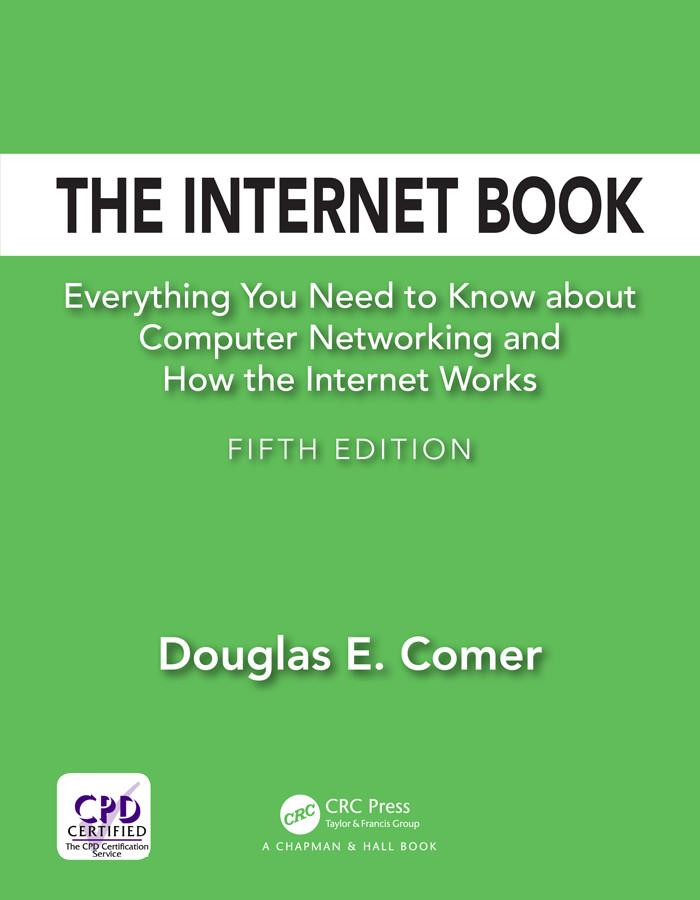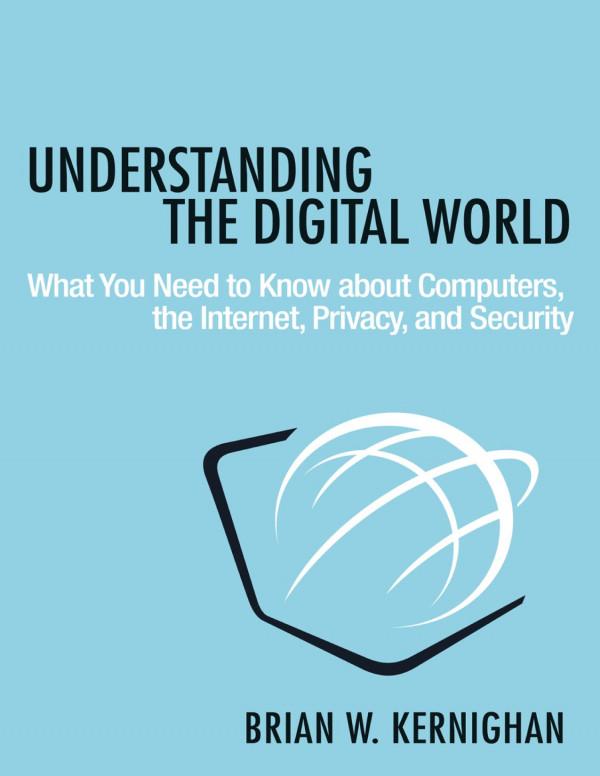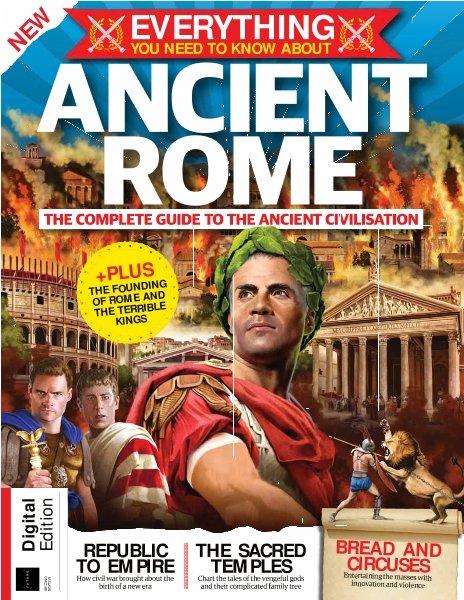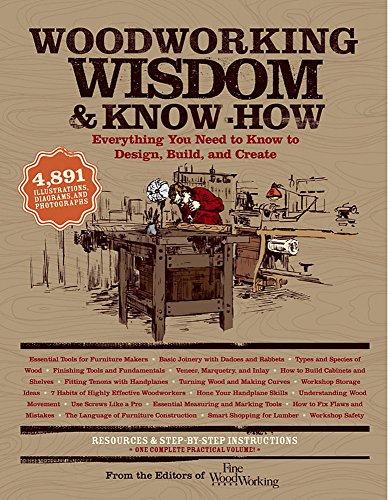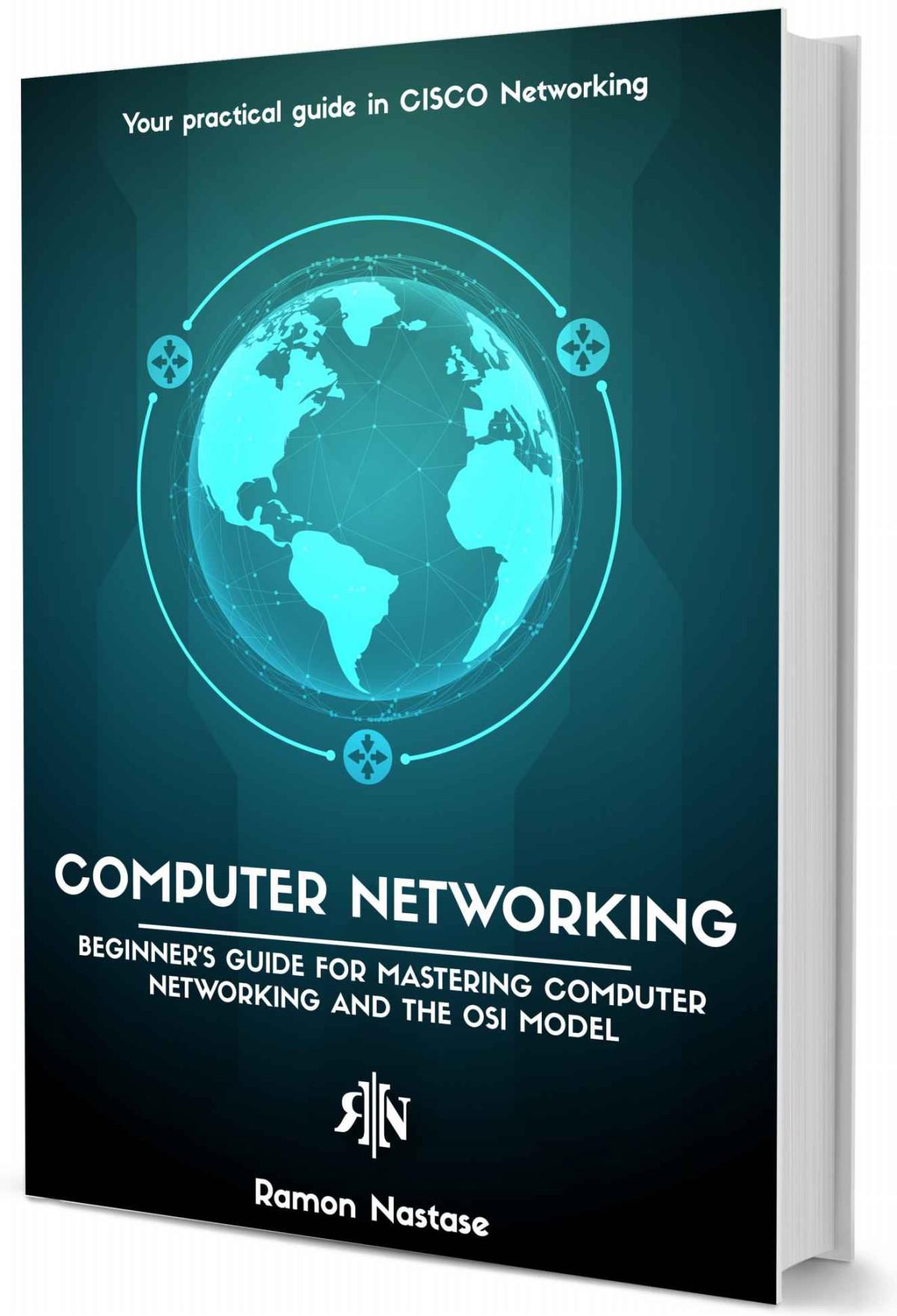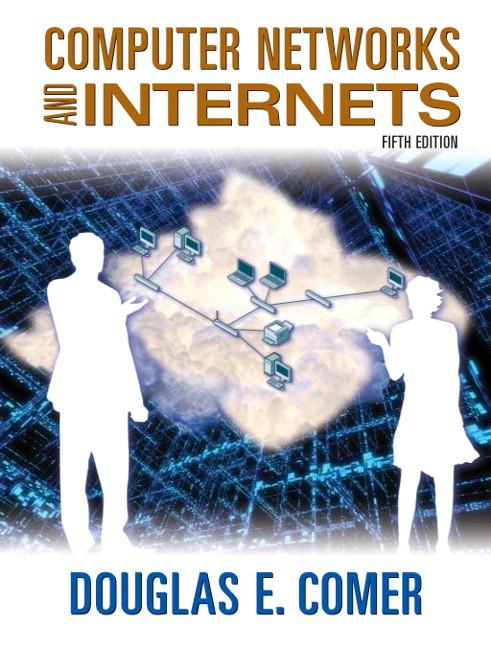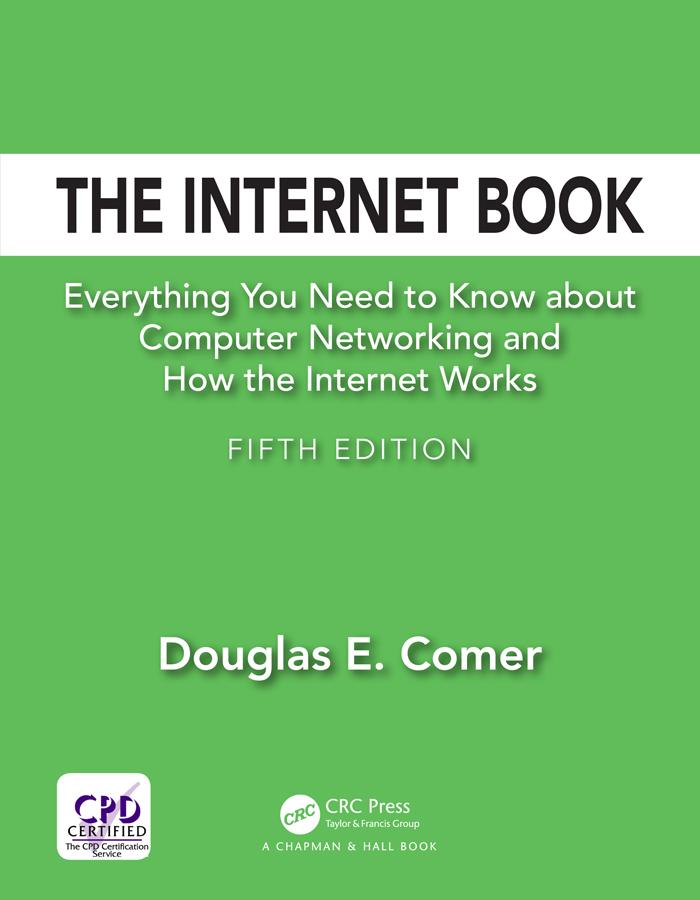The Internet Book
Douglas E. Comer
Departments of Computer Science and ECE
Purdue University West Lafayette, IN
Everything
Know
Computer
You Need to
about
Networking and How the Internet Works
Fifth Edition

CRC Press
Taylor & Francis Group
6000 Broken Sound Parkway NW, Suite 300
Boca Raton, FL 33487-2742
© 2019 by Taylor & Francis Group, LLC
CRC Press is an imprint of Taylor & Francis Group, an Informa business
No claim to original U.S. Government works
Printed on acid-free paper
Version Date: 20180730
International Standard Book Number-13: 978-1-138-33133-4 (Hardback)
International Standard Book Number-13: 978-1-138-33029-0 (Paperback)
This book contains information obtained from authentic and highly regarded sources. Reasonable efforts have been made to publish reliable data and information, but the author and publisher cannot assume responsibility for the validity of all materials or the consequences of their use. The authors and publishers have attempted to trace the copyright holders of all material reproduced in this publication and apologize to copyright holders if permission to publish in this form has not been obtained. If any copyright material has not been acknowledged please write and let us know so we may rectify in any future reprint.
Except as permitted under U.S. Copyright Law, no part of this book may be reprinted, reproduced, transmitted, or utilized in any form by any electronic, mechanical, or other means, now known or hereafter invented, including photocopying, microfilming, and recording, or in any information storage or retrieval system, without written permission from the publishers.
For permission to photocopy or use material electronically from this work, please access www.copyright.com (http://www.copyright.com/) or contact the Copyright Clearance Center, Inc. (CCC), 222 Rosewood Drive, Danvers, MA 01923, 978-7508400. CCC is a not-for-profit organization that provides licenses and registration for a variety of users. For organizations that have been granted a photocopy license by the CCC, a separate system of payment has been arranged.
Trademark Notice: Product or corporate names may be trademarks or registered trademarks, and are used only for identification and explanation without intent to infringe.
Library of Congress Cataloging-in-Publication Data
Names: Comer, Douglas, author.
Title: The Internet book : everything you need to know about computer networking and how the Internet works / Douglas E. Comer. Description: Fifth edition. | Boca Raton : Taylor & Francis, CRC Press, 2018.
| Includes bibliographical references and index.
Identifiers: LCCN 2018021320 | ISBN 9781138330290
Subjects: LCSH: Internet. | Computer networks. | World Wide Web. Classification: LCC TK5105.875.I57 C65 2018 | DDC 004.67/8--dc23 LC record available at https://lccn.loc.gov/2018021320
Visit the Taylor & Francis Web site at http://www.taylorandfrancis.com and the CRC Press Web site at http://www.crcpress.com
To Everyone Who Is Curious
Preface
Chapter 1 The Internet is Everywhere
BasicFactsDoNotTelltheStory
ImagineLifeWithouttheInternet WhyyouShouldUnderstandInternetTechnology
LearningAbouttheInternet
UnderstandingtheBigPicture
TerminologyandTechnology
GrowthandAdaptability
TheImpactoftheInternet OrganizationoftheBook
APersonalNote
PART I Before The Internet
1.6 1.7 1.8 1.9 1.10 2.1 2.2 2.3
Contents
1.1 1.2 1.3 1.4 1.5
2.4 2.5 2.6 2.7 2.8 2.9
ACommunicationService SellingCommunication LimitedAccess HighCost
Chapter 2 Telephones Everywhere Introduction
TheDifficultTransition UbiquitousAccess RelevancetotheInternet Summary
Chapter 3 The World was Once Analog
Introduction
Sound,Vibrations,andAnalogRecording AnalogElectronicDevices
ManyElectronicDevicesAreAnalog
TheFirstAnalogCommunication
SendingAnAnalogSignalAcrossAWire
AnalogIsSimpleButInaccurate
ADefinitionOfDigital
DigitalMusic
RecordingSoundAsNumbers
ConvertingBetweenAnalogAndDigitalForms WhyDidDigitalMusicTakeOver?
Summary
Chapter 4 The Past and Present Digital Network
Introduction
TheWorldwasPreviouslyDigital
ATelegraphwasDigital
MorseCode
LettersandDigitsinMorseCode
TelegraphUsersdidNotEncounterMorseCode VirtuallyInstantCommunication SpeedIsRelative
TheTelephoneEventuallyBecameDigital RelevanceToTheInternet
BinaryEncodingOfDataOnTheInternet WhyUseTwoSymbols?
Summary
Chapter 5 Basic Communication
3.1 3.2 3.3 3.4 3.5 3.6 3.7 3.8 3.9 3.10 3.11 3.12 3.13 4.1 4.2 4.3 4.4 4.5 4.6 4.7 4.8 4.9 4.10 4.11 4.12 4.13 5.1 5.2
Introduction
CommunicationUsingElectricity
5.3 5.4
SendingSignals
UsingSignalsToSendInformation
Modem:AModulatorandaDemodulatorCombined
HowModemsAllowTwo-WayTraffic
ACharacterCodeforDigitalInformation
BitsAndBytes
DetectingErrors
Summary
Chapter 6 Local Area Networks
Introduction
TheDigitalRevolution
TheMovetoMultipleComputers
RemovableMediaandManualTransfer
EarlyComputersUsedCircuitBoards
LANs
TheLANApproach
LANHardware
WirelessLAN(WLAN)Connections
WiredandWirelessLANTechnologies
WirelessPANTechnology
ConnectingaDevicetoanEthernet
ConnectingaDevicetoaWi-FiNetwork
Wi-FiSecurity
TheImportanceofLANTechnology
RelationshiptotheInternet
PART II A Brief History Of The Internet
Chapter 7 Internet: Motivation and Beginnings
6.2 6.3 6.4 6.5 6.6 6.7 6.8 6.9 6.10 6.11 6.12 6.13 6.14 6.15 6.16 7.1 7.2 7.3
AProliferationofLANs
NoTechnologySolvesAllProblems
WideAreaNetworkTechnologies
5.5 5.6 5.7 5.8 5.9 5.10 6.1
CanWeBuildAGlobalWAN?
U.S.DepartmentofDefenseNetworkingResearch
ExperimentalResearch
TheInternetEmerges
TheARPANETBackbone
InternetSoftware
TheNameIsTCP/IP
TheSurprisingChoiceOfOpenStandards
OpenCommunicationSystemsWin
PlacingInternetTechnicalDocumentationOnline
TheU.S.MilitaryAdoptedTCP/IP
Summary
Chapter 8 The Incredible Growth
Introduction
StimulatingAdoption
Meanwhile,BackinComputerScience
TheInternetMeetsUnix
TheU.S.MilitaryMakesaCommitment
TheInternetDoubledinSizeinOneYear
InternetforEveryComputerScienceDepartment
GraduateStudentVolunteersContribute
InternetGovernance:TheIABandIETF
NSFLedInternetExpansion
NSFTarget:AllofScienceandEngineering
TheNSFNETBackbone
OntotheANSBackbone
Commercialization
ExponentialGrowth
WhenWillGrowthEnd?
PART III Inside The Internet
Chapter 9 Packet Switching
7.6 7.7 7.8 7.9
7.4 7.5
7.10 7.11 7.12 7.13 7.14 7.15 8.1 8.2 8.3 8.4 8.5 8.6 8.7 8.8 8.9 8.10 8.11 8.12 8.13 8.14 8.15 8.16
Introduction
SharingToReduceCost
SharingByTakingTurns
AvoidingLongDelays
LongMessagesAndShortPackets
EachPacketContainsExtraInformation DevicesHaveAddresses PacketSize
ToHumans,PacketTransmissionSeemsInstantaneous SharingOccursOnDemand
RelevanceToTheInternet Summary
Chapter 10 Internet: A Network of Networks
Introduction
BuildingAGlobalNetwork
TwoFundamentalConcepts
UsingASpecializedComputerToInterconnectNetworks
InternetTerminology:RoutersAndHosts
BuildingALargeVirtualNetwork
TheInternetIncludesMultipleTypesOfNetworks Ownership,ISPs,AndTransitTraffic AHierarchyOfISPs
PeeringArrangementsAtTheCenterOfTheInternet AnExampleTripThroughTheInternet
TheInternetApproachRevolutionizedNetworking Summary
Chapter 11 Internet Access Using Broadband and Wireless
Introduction
AccessTechnologiesForTheLastMile
Dial-upInternetAccess
NarrowbandAndBroadbandAccess
9.1 9.2 9.3 9.4 9.5 9.6 9.7 9.8 9.9 9.10 9.11 9.12 10.1 10.2 10.3 10.4 10.5 10.6 10.7 10.8 10.9 10.10 10.11 10.12 10.13 11.1 11.2 11.3 11.4
LeasedDataCircuitAccess
DigitalSubscriberLine(DSL)Access
CableModemAccess
WirelessAccessTechnologies
CellularWirelessAccess(4Gand5G)
Summary
Chapter 12 Internet Performance
Introduction
NetworkSpeed
WhatDoesSpeedMean?
BrickDelivery
TransfersAcrosstheInternet
ConnectingHeterogeneousNetworks
TheEffectofSharing
DelaysInTheInternet
ShouldYouPayforHigherSpeedInternet?
Summary
Chapter 13 IP: Software to Create A Virtual Network
Introduction
Protocol:AnAgreementForCommunication
BasicFunctionality:TheInternetProtocol
PacketsArriveUnchanged
InternetSoftwareonYourDevice
InternetPacketsAreCalledDatagrams
ProvidingTheIllusionOfAGiantNetwork
TheInternet’sInternalStructure
DatagramsTravelInsideNetworkPackets
InternetAddresses
IPv4AndIPv6
PermanentandTemporaryIPAddresses
Summary
11.5 11.6 11.7 11.8 11.9 11.10 12.1 12.2 12.3 12.4 12.5 12.6 12.7 12.8 12.9 12.10 13.1 13.2 13.3 13.4 13.5 13.6 13.7 13.8 13.9 13.10 13.11 13.12 13.13
Chapter 14 TCP: Software for Reliable Communication
Introduction
APacketSwitchingSystemCanBeOverrun
SoftwaretoHandleCongestionandDatagramLoss
TheMagicofRecoveringLostDatagrams
TCP’sSophisticatedRetransmissionAlgorithm
HandlingCongestion
TCPandIPWorkTogether
Summary
Chapter 15 Clients, Servers, and Internet Services
Introduction
AllServicesareOutsidetheInternet
SoftwareProvidesAllServices
ServicesUseClientAndServerApps
AServerMustAlwaysRun
MultipleClientsCanAccessAServerSimultaneously
AmbiguousTerminology
Summary
Chapter 16 Names for Computers
Introduction
ComputerNames
ComputerNamesPastandPresent
AComputer’sNameMustBeUnique
UsingSuffixestoMakeEachNameUnique
DomainNameswithMorethanThreeLabels
Top-LevelDomainsBeforeAndAfterICANN
DomainNamesOutsidetheUS
TranslatingaNametoanIPAddress
ManyDomainNameServers
LookingUpADomainName
APersonalStoryAboutADNSProblem
14.1 14.2 14.3 14.4 14.5 14.6 14.7 14.8 15.1 15.2 15.3 15.4 15.5 15.6 15.7 15.8 16.1 16.2 16.3 16.4 16.5 16.6 16.7 16.8 16.9 16.10 16.11 16.12
Summary
Chapter 17 Sharing An Internet Connection (NAT)
Introduction
MultipleDevicesSharingaSingleIPAddress
WirelessRoutersandNAT
HowAWirelessRouterWorks
DatagramModification
YourDeviceCanActLikeaWirelessRouter
YouProbablyUseNATEveryDay
WhyInternetSizeisDifficultToEstimate
Summary
Chapter 18 Why the Internet Works Well
Introduction
TheInternetWorksExtremelyWell FlexibilitytoAccommodateArbitraryNetworks FlexibilityToAccommodateNewAppsQuickly TheAdvantageofBeingOpenandVendorIndependent AnExtremelyEfficientDesign
PacketSwitchingIsAFundamentallyBetterIdea CanTheSuccessBeReplicated?
Summary
PART IV Internet Services
Chapter 19 Electronic Mail
Introduction
FunctionalityAndSignificance
MailboxesandEmailAddresses
SendingAnEmailMessageDirectly
PersonalComputersandEmailProviders
16.13 17.1 17.2 17.3 17.4 17.5 17.6 17.7 17.8 17.9 18.1 18.2 18.3 18.4 18.5 18.6 18.7 18.8 18.9 19.1 19.2 19.3 19.4 19.5
AnExampleEmailExchange
EmailDelaysandRetryAttempts
Providers,Fees,andAccess
MailingLists
UndisclosedRecipients
Summary
Chapter 20 The World Wide Web: Browsers and Basics
Introduction
BrowsersandWebServers
URLsandTheirMeaning
WebPageswithLinkstoOtherPages
LinkingAcrossWebServers
Hypermedia
APageWithMultimediaItems
FetchingaPageThatContainsMultipleItems
InsideaBrowser
PluginsandOtherAdd-onSoftwareModules
HistoricalNotes
Summary
Chapter 21 The World Wide Web: HTML and Web Pages
Introduction
AccommodatingDisplayHardware
HTML,ALanguageUsedForWebDocuments
SpecifyingFormattingGuidelines
ALinkEmbeddedInAWebPage
AnImageOnAWebPage
Point-And-ClickWebPageDesign
Summary
Chapter 22 The World Wide Web: Web Pages that Change
19.6 19.7 19.8 19.9 19.10 19.11 20.1 20.2 20.3 20.4 20.5 20.6 20.7 20.8 20.9 20.10 20.11 20.12 21.1 21.2 21.3 21.4 21.5 21.6 21.7 21.8
Introduction
ConventionalWebPagesandStaticContent
HowaBrowserAccessesaStaticWebPage
AccessingAPageThatHasChangeableContent
FramesWithinABrowserWindow
AdvertisingAndFrames
PersonalizedWebPagesAndDynamicContent
Pop-UpsAndPop-UpBlockers
UserInteractionWithForms
ShoppingCartsAndCookies
ShouldYouAcceptCookies?
AnimatedWebPages
AnimationWithABrowserScript
Java,JavaScript,AndHTML5 Summary
Chapter 23 Social Networking and Personal Publishing
Introduction
ThePublish-SubscribeParadigmChanges
TheRiseofInternetPublishingServices
DiscussionForumsandBulletinBoards
ModeratedDiscussionsandEditorialControl
EssaysandPersonalOpinions(Blogs)
CooperativePublishing(Wikis)
PersonalWebPagesandSocialNetworkingSites Summary
Chapter 24 The Internet of Things (IoT)
Introduction
ConnectedDevicesWithoutHumanOperators
Sensors
Actuators
EmbeddedComputerSystems
22.1 22.2 22.3 22.4 22.5 22.6 22.7 22.8 22.9 22.10 22.11 22.12 22.13 22.14 22.15 23.1 23.2 23.3 23.4 23.5 23.6 23.7 23.8 23.9 24.1 24.2 24.3 24.4 24.5
TheInternetofThings
GadgetsAndWirelessNetworkConnections
CentralizedAndMeshIotNetworksInAHome
AWirelessIotMeshinAHome
SmartHomes,Buildings,AndFactories
CivilandPowerInfrastructure:BridgesandGrids Summary
Chapter 25 Internet Search (Search Engines)
Introduction
DatabasesandStructuredInformation
ClassificationofInformation
SearchingUnstructuredWebPages
ADemonstrationofKeywordSearch
Indexing:HowanInternetSearchEngineOperates PersonalizedSearchResults
IndexingTheEntireWeb
AdvertisingPaysForSearching Summary
Chapter 26 Voice and Video Communication (VoIP)
Introduction
Real-TimeInformation
TheTwoTypesOfReal-TimeTransfer
StreamingReal-TimeDataOverTheInternet
Real-TimeStreams,Packets,AndJitter
APlaybackBuffer
AccommodatingLowThroughput
TheUser’sViewOfAPlaybackBuffer
TheEffectOfPausingPlayback
TheEffectOfNetworkCongestion
HowToOvercomeAStart-StopCycle TeleconferencingServices
24.6 24.7 24.8 24.9 24.10 24.11 24.12 25.1 25.2 25.3 25.4 25.5 25.6 25.7 25.8 25.9 25.10 26.1 26.2 26.3 26.4 26.5 26.6 26.7 26.8 26.9 26.10 26.11 26.12
UsingInternetTechnologyForTelephoneService
VoIPTelephones Summary
Chapter 27 File Transfer and Data Sharing
Introduction
FileTransfer
AnExampleFileTransfer
AnExampleURLForFolderContents
HowFTPWorks
FileTransferForAnAverageUser
ExchangingInformationWithoutRunningAServer TransferVs.CollaborativeWork
Peer-To-PeerFileSharing Summary
Chapter 28 Remote Desktop
Introduction
RemoteLogin
RemoteAccessWithModernGraphicalDevices
HowRemoteDesktopWorks
RemoteDesktopSoftware
AssessmentOfRemoteLoginAndRemoteDesktop
UnexpectedResultsFromRemoteAccess Summary
Chapter 29 Cloud Services And Cloud Computing
Introduction
ABriefHistoryOfComputing
MaintainingComputers
DataInconsistencies
DataSynchronizationWithADirectConnection
26.13 26.14 26.15 27.1 27.2 27.3 27.4 27.5 27.6 27.7 27.8 27.9 27.10 28.1 28.2 28.3 28.4 28.5 28.6 28.7 28.8 29.1 29.2 29.3 29.4 29.5
SelectingDataItemsForSynchronization
SynchronizationProblemsAndInternetSynchronization
CloudTerminology
TypesOfCloudServices
CloudApplicationsAndTheInternetofThings
GeneralizedCloudComputing
CloudComputingFromACompany’sPerspective Public,Private,AndHybridCloud
CloudDataCentersAndRacksOfComputers
GeneralizedCloudComputingForAnIndividual
TheDisadvantageOfUsingTheCloud
VirtualizationTechnologyUsedForCloudComputing Summary
PART V Other Aspects Of Internet Technology
Chapter 30 Network Security (Encryption And Firewalls)
Introduction
CybercrimeAndCyberSecurity
TheUnsecureInternet
KeepingConversationsConfidential
ComputerEncryptionAndMathematics
ConfidentialWebBrowsing
NoNetworkIsAbsolutelySecure EncryptionKeys
TwoKeysMeansNeverHavingToTrustAnyone
Authentication:UserIDsAndPasswords
Two-FactorAuthentication
UsingEncryptionForAuthentication
WirelessNetworkSecurity
NetworkFirewall:ProtectionFromUnwantedPackets
PacketFilteringInAFirewall
TrojanHorsesAndFirewallProtection
ResidentialAndIndividualFirewalls
29.6 29.7 29.8 29.9 29.10 29.11 29.12 29.13 29.14 29.15 29.16 29.17 29.18 30.1 30.2 30.3 30.4 30.5 30.6 30.7 30.8 30.9 30.10 30.11 30.12 30.13 30.14 30.15 30.16 30.17
OtherRecommendedPrecautions
Summary
Chapter 31 Security Scams: Fooling Users
Introduction
TraditionalScamsAndCybercrime
TheForeignBankScam
Phishing
TheSoftwareUpdateScam
PasswordChangeScam
MisleadingSSIDScam
Man-In-The-MiddleAttacks
MisleadingEmailAddressesAndWebSiteURLs
MalwareInEmailAttachments
Summary
Chapter 32 Secure Access From A Distance (VPNs)
Introduction
AnEmployeeAtARemoteLocation
SecureRemoteDesktop
UsingALeasedCircuitForSecureTelecommuting
VPNTechnology:Secure,Low-CostRemoteAccess
VPNFromAnEmployee’sPerspective
HowAVPNWorks
TheIllusionOfADirectConnection
ObtainingACorporateIPAddress
ExchangingPacketsWithTheVPNServer
TheSignificanceOfVPNs
Summary
Chapter 33 Internet Economics And Electronic Commerce
Introduction
30.18 30.19 31.1 31.2 31.3 31.4 31.5 31.6 31.7 31.8 31.9 31.10 31.11 32.1 32.2 32.3 32.4 32.5 32.6 32.7 32.8 32.9 32.10 32.11 32.12 33.1
TheISPHierarchy
NetworkCapacityAndRouterHardware
ServiceProviderFeeStructures
ReceiverPays
ISPRevenue
PeeringArrangementsAmongTier1ISPs
SecurityTechnologyAndE-commerce
DigitalSignatures
CertificatesContainPublicKeys
DigitalMoney
HowDigitalCashWorks
BusinessAndE-commerce
TheControversyOverNetNeutrality Summary
Chapter 34 A Global Digital Library
Introduction
WhatIsALibrary?
IsTheInternetADigitalLibrary?
NewServicesReplaceOldServices
DigitalFormats,Standards,AndArchivalStorage
OrganizingALibrary
TheDisadvantageOfImposingStructure
SearchingAnUnstructuredCollection
WhatIsTheInternet?
APersonalNote
Index
33.2 33.3 33.4 33.5 33.6 33.7 33.8 33.9 33.10 33.11 33.12 33.13 33.14 33.15 34.1 34.2 34.3 34.4 34.5 34.6 34.7 34.8 34.9 34.10
Preface
The Internet Book explains how computers communicate, what the Internet is, how the Internet works, and what services the Internet offers. It is designed for readers who do not have a strong technical background — early chapters clearly explain the terminology and concepts needed to understand all the services. When you finish reading, you will understand the technology behind the Internet, will appreciate how the Internet can be used, and discover why it is so exciting. In addition, you will understand the origins of the Internet and see how rapidly it has grown.
Instead of using mathematics, algorithms, or computer programs, the book uses analogies from everyday life to explain technology. For example, to explain why digital communication is superior to analog, the text uses an analogy of sending signals through fog with a flashlight. To explain how audio can be played back for the user at a steady rate when packets arrive in clumps, the text uses the analogy of smart phones arriving at a distribution center in one shipment, but being sold to customers one at a time.
In addition to explaining the services users encounter such as email, video streaming, instant messaging, and web browsing, the text covers key networking concepts such as packet switching, Local Area Networks, protocol software, and domain names. More important, the text builds on fundamentals — it describes basic Internet communication facilities first, and then shows how the basic facilities are used to provide a variety of services.
The fifth edition retains the same general structure as the previous edition, but adds three new chapters (19, 26, and 32), and updates material throughout. Chapter 19 explains NAT, a technology many Internet subscribers now have in their home. Chapter 26 explains blogs and wikis, two recent Internet applications. The third
new chapter, 32, explains Virtual Private Networking, a technology that allows a trusted user, such as an employee, to access an organization’s network safely from an arbitrary remote location.
As with the previous edition, the book is divided into four main parts. The first part begins with fundamental concepts such as digital and analog communication. It also introduces packet switching and explains the Local Area Network technologies that are used in most businesses and in many homes.
The second part of the book gives a short history of the Internet research project and the development of the Internet. Although most of the history can be skipped, readers should pay attention to the phenomenal growth rate, which demonstrates that the technology was designed incredibly well — no other communication technology has remained as unchanged through such rapid growth.
The third part of the book explains how the Internet works, including a description of the two fundamental protocols used by all services: the Internet Protocol (IP) and the Transmission Control Protocol (TCP). Although they omit technical details, the chapters in this part allow students to understand the essential role of each protocol and gain perspective on the overall design.
The fourth part of the book examines services available on the Internet. In addition to covering browsers, web documents, and search engines used with the World Wide Web, chapters discuss email, bulletin boards, file transfer, remote desktops, wikis, blogs, and audio and video communication. In each case, the text explains how the service operates and how it uses facilities in the underlying system. The fourth part concludes with a discussion of network security, Virtual Private Networks, and electronic commerce.
The Internet Book serves as an excellent reference text for a college-level course on the Internet. Although presented in a nontechnical manner, the material is scientifically accurate. More important, in the twenty-first century, an educated person needs to know more than how to use a browser or set up a web page — they should have some understanding of what goes on behind the scenes. They can acquire such knowledge from this text.
Instructors are encouraged to combine classroom lectures with laboratory sessions in which students see and use the technology first-hand. In all courses, early labs should focus on exploring a variety of services, including sending email, using a browser, using a search engine, downloading files, listening to audio, and using an IP telephone, if one is available. I encourage all students, even those who have no interest in computers, to build a trivial web page by hand. In addition to helping them see the relationship between tags in an HTML document and the resulting display, it shows students how a server transfers files on a computer disk to a browser. Seeing the relationship in labs helps one better understand as they read about the underlying process.
Lab projects later in the semester depend on the type of course. Business-oriented courses often focus students on using the Internet or constructing a case study — labs require students to search the Internet for information and then write a paper that analyzes the information. Other courses use labs to focus on tools such as programs used to create a web page. Some courses combine both by having students search for information and then create a web page that contains links to the information. In any case, we have found that students enter Internet courses with genuine enthusiasm and motivation; a professor’s task is merely to provide perspective and remind students throughout the semester why the Internet is so exciting.
The author thanks many people who have contributed to editions of this book. John Lin, Keith Rovell, Rob Slade, and Christoph Schuba read early versions and made suggestions. Dwight Barnette, George Polyzo, Donald Knudson, Dale Musser, and Dennis Ray sent the publisher reviews of a previous edition. Scott Comer offered perspective. Sharon Comer and Mark Kunschke checked details and provided many useful suggestions for this edition. As always, my wife, Christine, carefully edited the manuscript, solved many problems, and improved the wording.
Douglas E. Comer
This book was typeset by the author and sent across the Internet in digital form to a publishing company where it was edited and sent to be printed.
